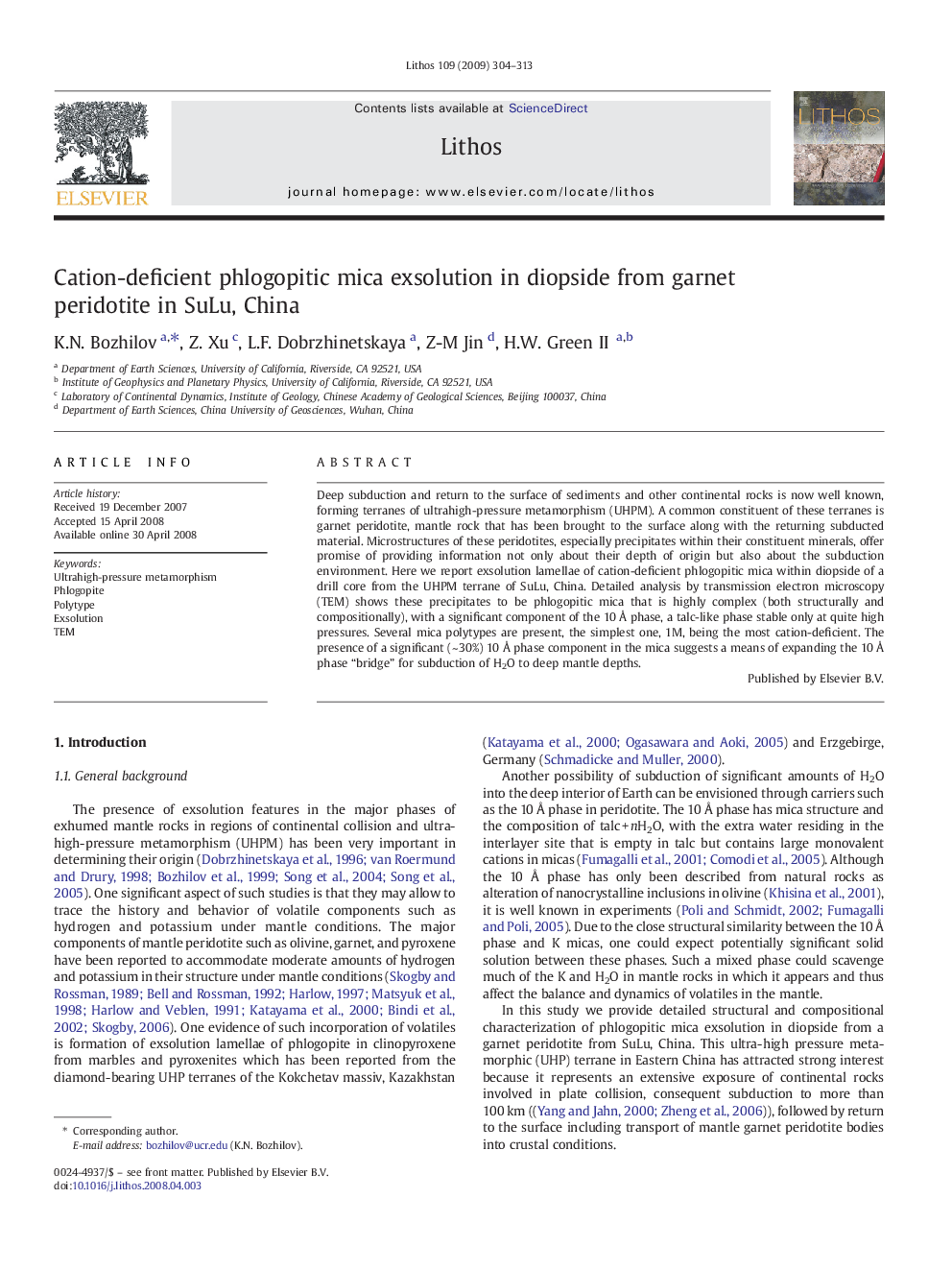| Article ID | Journal | Published Year | Pages | File Type |
|---|---|---|---|---|
| 4717414 | Lithos | 2009 | 10 Pages |
Deep subduction and return to the surface of sediments and other continental rocks is now well known, forming terranes of ultrahigh-pressure metamorphism (UHPM). A common constituent of these terranes is garnet peridotite, mantle rock that has been brought to the surface along with the returning subducted material. Microstructures of these peridotites, especially precipitates within their constituent minerals, offer promise of providing information not only about their depth of origin but also about the subduction environment. Here we report exsolution lamellae of cation-deficient phlogopitic mica within diopside of a drill core from the UHPM terrane of SuLu, China. Detailed analysis by transmission electron microscopy (TEM) shows these precipitates to be phlogopitic mica that is highly complex (both structurally and compositionally), with a significant component of the 10 Å phase, a talc-like phase stable only at quite high pressures. Several mica polytypes are present, the simplest one, 1M, being the most cation-deficient. The presence of a significant (~ 30%) 10 Å phase component in the mica suggests a means of expanding the 10 Å phase “bridge” for subduction of H2O to deep mantle depths.
